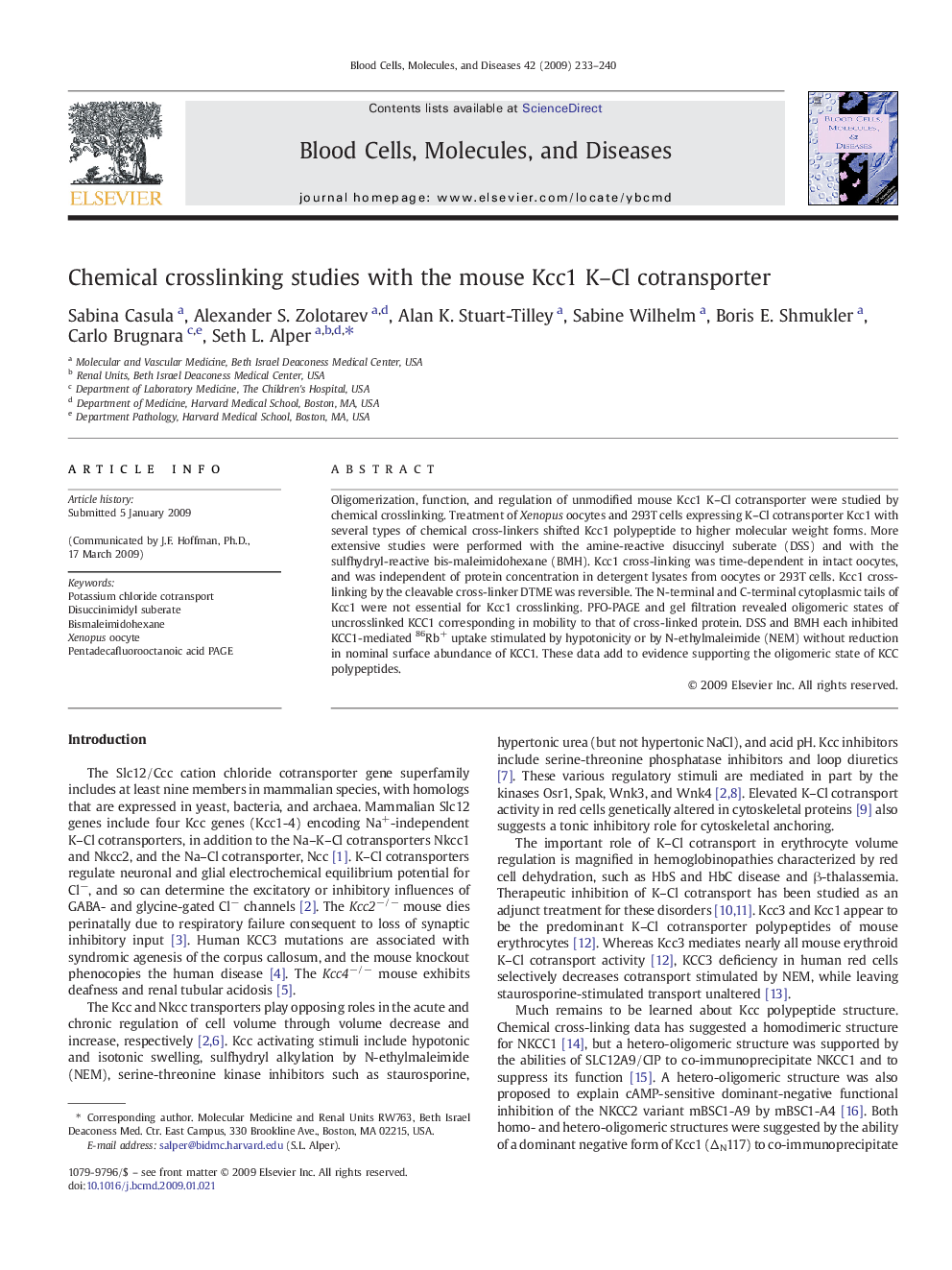| Article ID | Journal | Published Year | Pages | File Type |
|---|---|---|---|---|
| 2827728 | Blood Cells, Molecules, and Diseases | 2009 | 8 Pages |
Oligomerization, function, and regulation of unmodified mouse Kcc1 K–Cl cotransporter were studied by chemical crosslinking. Treatment of Xenopus oocytes and 293T cells expressing K–Cl cotransporter Kcc1 with several types of chemical cross-linkers shifted Kcc1 polypeptide to higher molecular weight forms. More extensive studies were performed with the amine-reactive disuccinyl suberate (DSS) and with the sulfhydryl-reactive bis-maleimidohexane (BMH). Kcc1 cross-linking was time-dependent in intact oocytes, and was independent of protein concentration in detergent lysates from oocytes or 293T cells. Kcc1 cross-linking by the cleavable cross-linker DTME was reversible. The N-terminal and C-terminal cytoplasmic tails of Kcc1 were not essential for Kcc1 crosslinking. PFO-PAGE and gel filtration revealed oligomeric states of uncrosslinked KCC1 corresponding in mobility to that of cross-linked protein. DSS and BMH each inhibited KCC1-mediated 86Rb+ uptake stimulated by hypotonicity or by N-ethylmaleimide (NEM) without reduction in nominal surface abundance of KCC1. These data add to evidence supporting the oligomeric state of KCC polypeptides.
